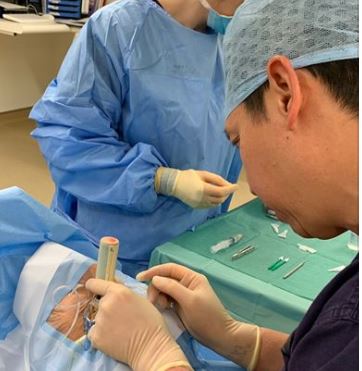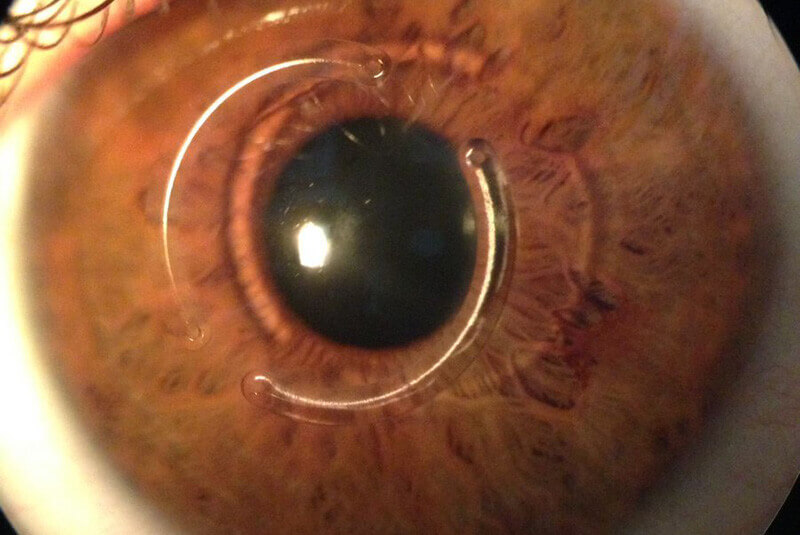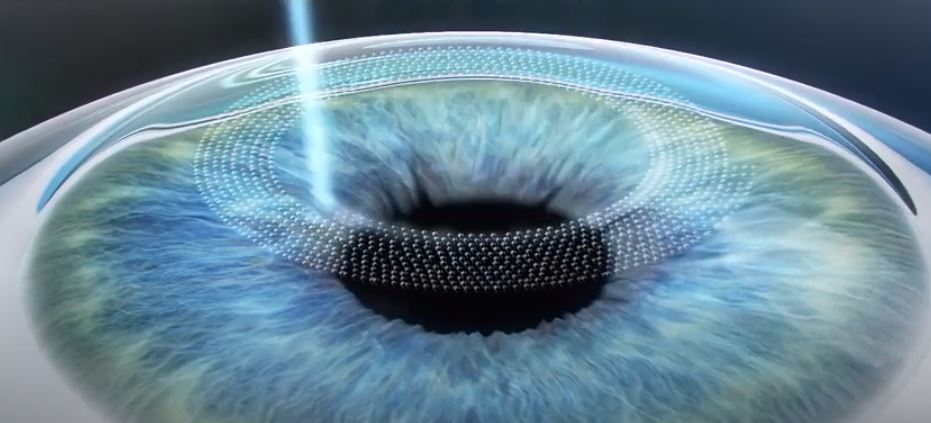Telephone and e-consultation are available when sought. Contact Us to arrange.
Telephone and e-consultation are available when sought. Contact Us to arrange.

Keratoconus is a common an eye condition that affects the shape of the cornea (the clear dome like window at the front of the eye) such that it goes from spherical to conical. The incidence of Keratoconus in UK is believed to be around 1 in 2000 people.
The common symptoms include visual blurring, glare, rapidly changing prescriptions (particularly an increase in myopia and astigmatism), and inability to achieve good visual correction with glasses. The condition is not painful although patients with advanced stage of the condition may develop sudden loss of vision in association with discomfort of the eye know as acute hydrops.
The cause is often unknown, although there is an association with some systemic conditions e.g. Marfan syndrome, Osteogenensis Imperfecta etc. It is believed genetics may play a role. Patients can also develop a condition like keratoconus (also known as post excimer laser ectasia) following laser eye surgery. This however is extremely rare especially with modern pre-operative screening tools available and with good assessment with reputed services and teams like at the Eye Correction Centre.
The condition is diagnosed through clinical signs and with a scan of the front dome of the eye called corneal tomography at the clinic.
Treatment is primarily aimed to achieve best possible focus/vision and to stabilise/preserve this over time. If detected and treated at the early stage, many patients may be able to continue with glasses or soft contact lenses or have corrective ICL implant surgery for glasses independence. However, as the condition progresses (as it often does between the age of 20-40 years of age), patients may have go on to needing specialised treatments as listed:
1. Special rigid format contact lenses fitted by specialist optometrists. Poorly fitted contact lenses can in fact cause progression of the condition. At Eye Correction Centre, we work closely with highly specialised contact lens practitioners who co-manage our patients to enable well fitted specialised lenses.
2. Cross linking therapy. This is to arrest the ongoing “coning” of the cornea and can prevent keratoconus getting worse. It is successful in over 90% of treated eyes. At Eye Correction Centre, we offer the latest technology in corneal cross linking. The treatment is painless, takes about 60 minutes per eye to perform and it can be done under local anaesthesia as a day case. When performed in a timely way this treatment has helped most patients to avoid the need for complex transplant surgery.

3. Implantable corneal segments (Kerarings). These are specialised implants into the cornea that flatten the cone and restore a more normalised corneal shape to help with vision with and without correction with glasses and contacts.

4. Corneal transplant surgery. In advanced cases this is necessary.
5. Fine tuning surgery with laser or implantable contact lens options – These are enhancement surgeries available through our Eye Correction Centre services to optimise the vision function after the other options. Patients often seek these to achieve greater levels of independence from glasses and contact lenses.

Following detailed assessments and checks to confirm safety parameters, the appropriate technique to treat is selected and the treatment is undertaken one side at a time or both eyes together which we will agree at the initial consultations. The treatment time can vary depending on the technique. Surgery is usually performed with local anaesthesia and is painless for patients. GA is available when sought. Soon after surgery, patients are free to go with drops to facilitate effective healing.
Regular follow up checks are undertaken to confirm appropriate healing.
Usually within a few days patients will notice being able to see much better. In cases where transplants are required due to advanced disease, vision recovery is much more prolonged (several months). The different techniques all target the same end result of improved functional vision.
As with all forms of surgical treatments there are risks of unpredictable outcomes and complications. As a general rule of thumb patients can expect a 95% chance of achieving functional vision to a high standard (corresponding to their best vision potential) from their initial surgery. 1-5% of patients may have some difficulties but in the majority of cases these can be managed. The risk of severe and lasting problems is very low at 1:2000 or less per eye (so both eyes getting affected is very rare indeed).
Click here to see detailed price list for all consultations and procedures
We offer a comprehensive eye service delivered through specialist and generalist eye doctors.
Please click here to read on all our speciality procedures
Please note: Whilst these are the general suitability criteria, individual criteria has to be taken into account for specific patient needs and the appropriate procedure applicable.
We are not a cut-price service because quality does not come by making compromises. However we are competitive and transparent in our pricing structure. We make efforts to ensure that patients are made aware of all price points in advance of any consultations/investigations and procedures, to enable our patients to make an informed choice on how they would like to proceed. Read more on the details of our prices
We work with all insurers. Please refer to the above FAQ on “Pricing” for full details. Please note – even if your insurer is not on the list of companies provided, let us know and we can help to make arrangements. Read more on the insurers we work with – listed at the end of our Pricing section
As a general rule of thumb patients can expect a 95% chance of achieving functional vision to a high standard (corresponding to their best vision potential) from their initial surgery.
As with all forms of surgical treatments there are risks of unpredictable outcomes and complications. 1 to 5% of patients may have some difficulties but in the majority of cases these can be managed. The risk of severe and lasting problems is very low at 1:2500 or less per eye (so both eyes getting affected is very rare indeed).
You will of course be given a full explanation of the specific risks and benefits of the individual procedure applicable to you at the time of the consultation.
Eye doctors are at least five times more likely as the general public to choose vision correction surgery for themselves. The study, featured in the Journal of Cataract and Refractive Surgery, surveyed 250 surgeons who perform LASIK. Of those, 62.6 percent said they have already undergone LASIK to correct their vision, and 91 percent said they have done it or recommended it for their immediate family members.









Wilmslow
Macclesfield
Warrington
Abergele